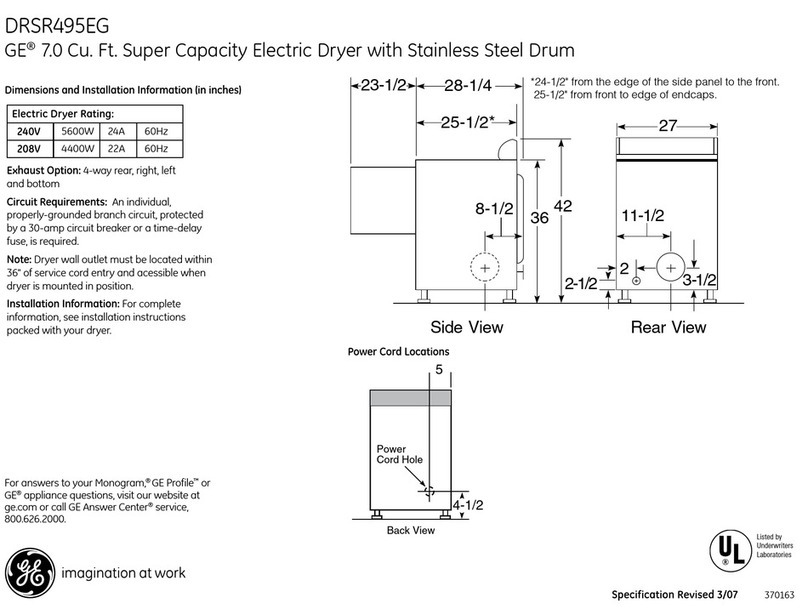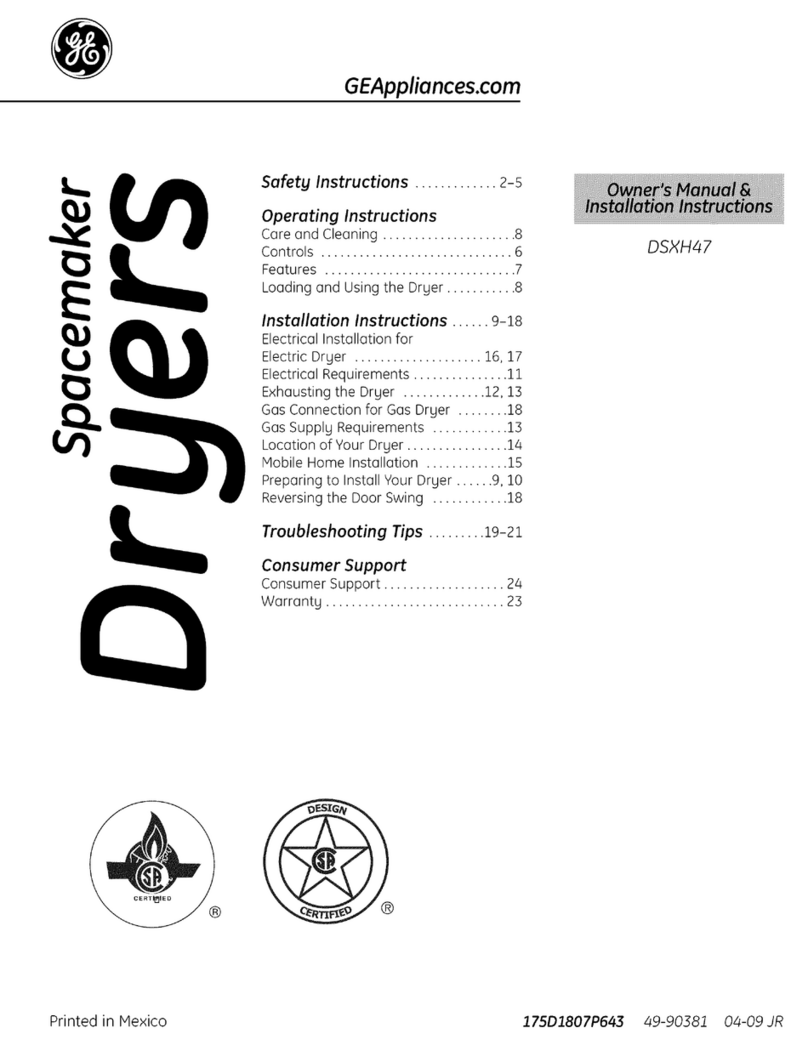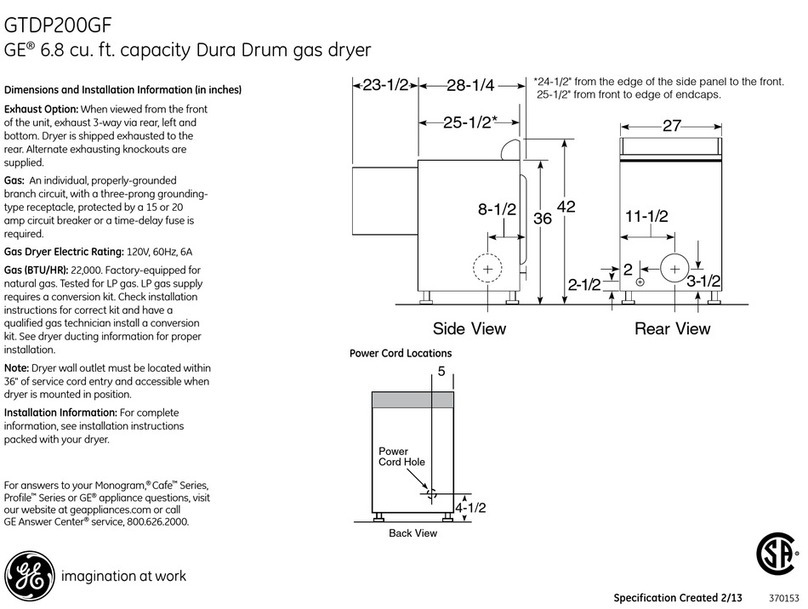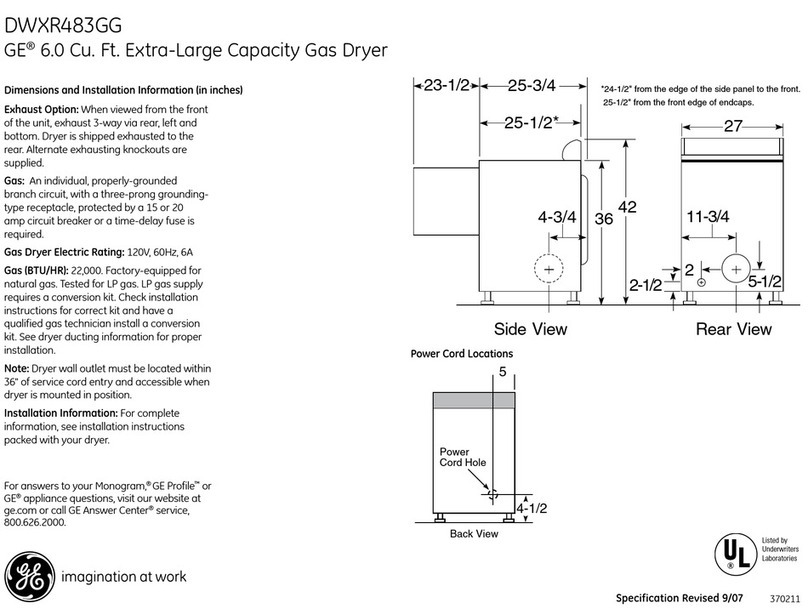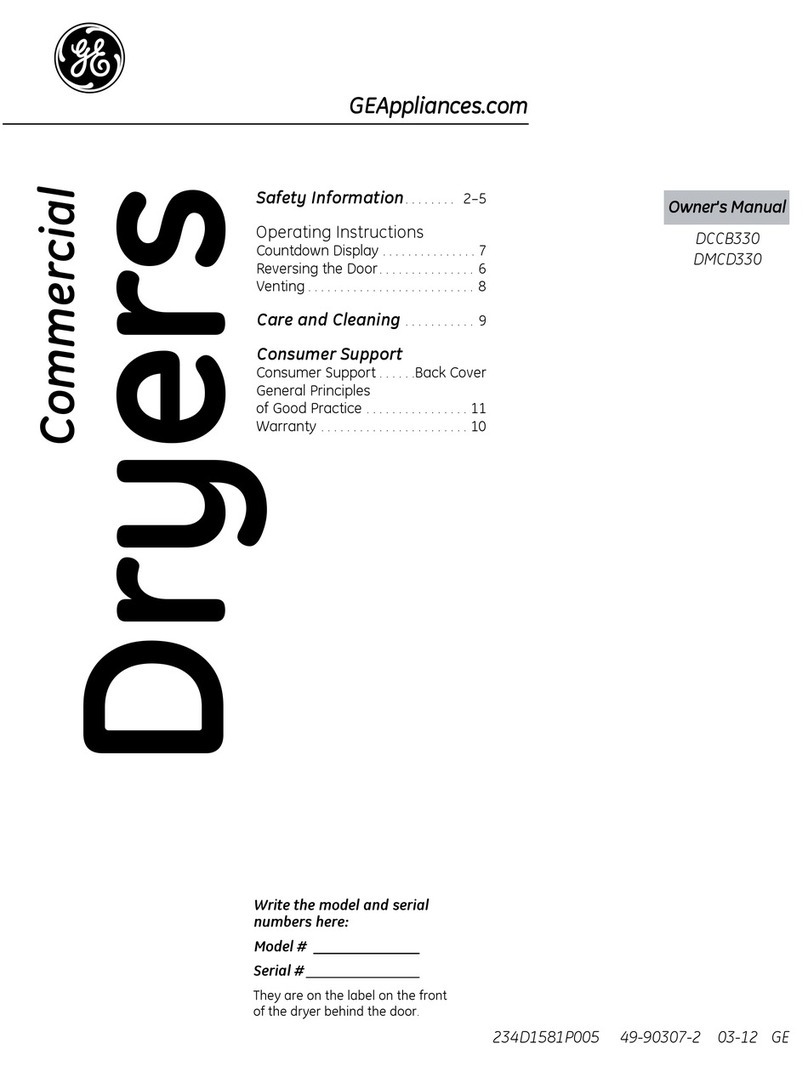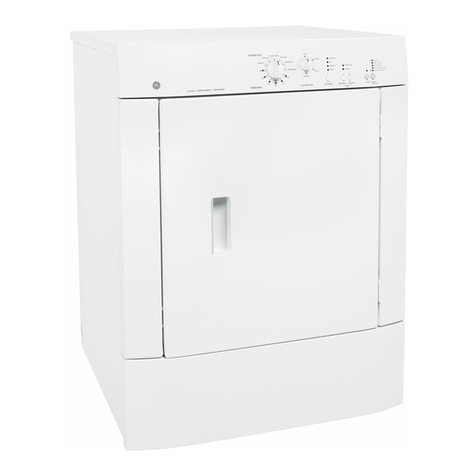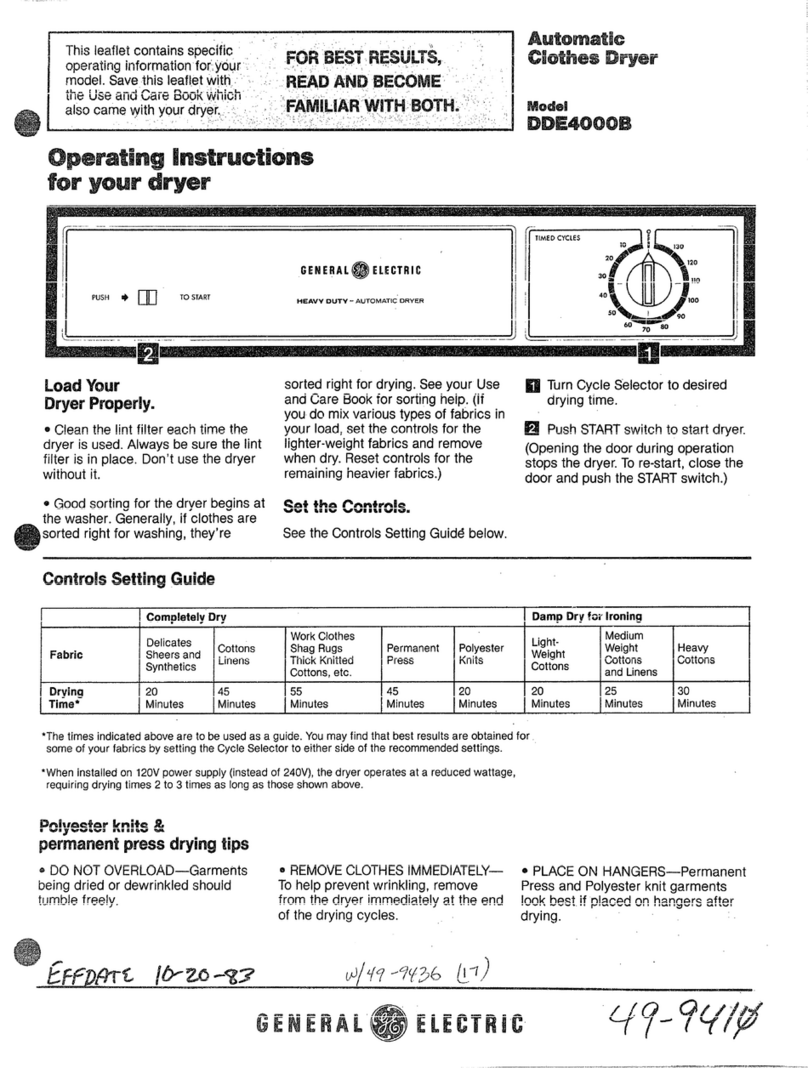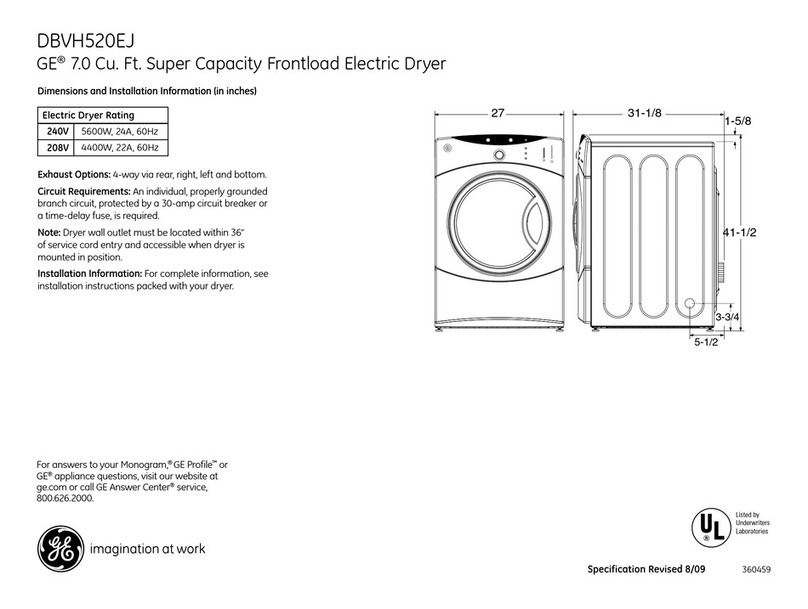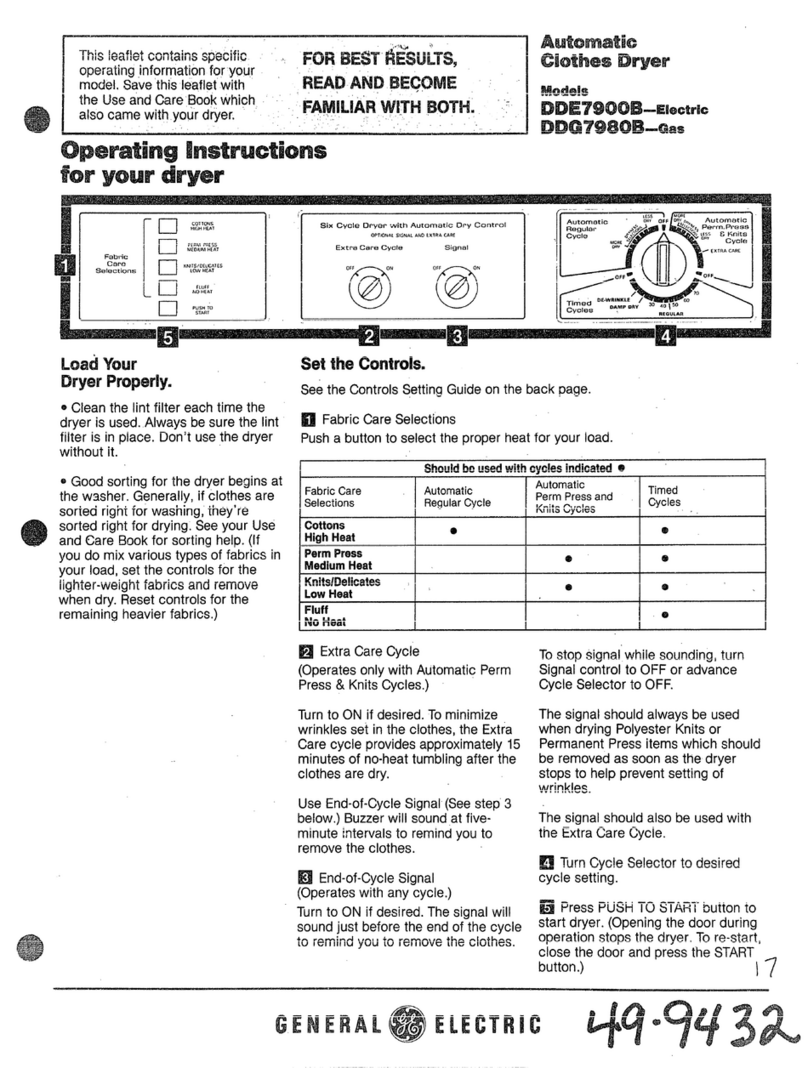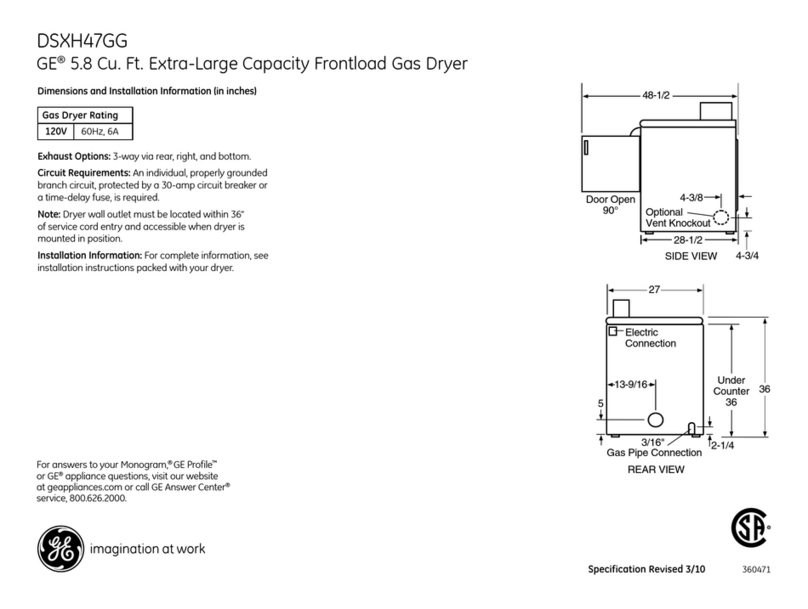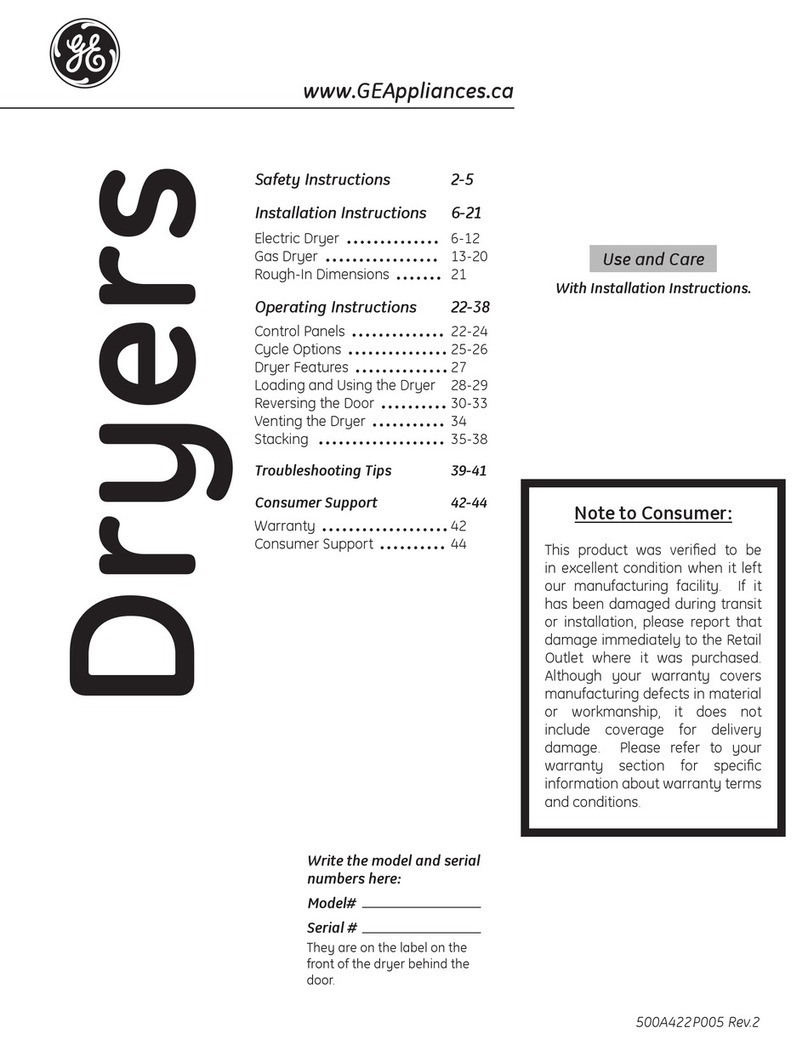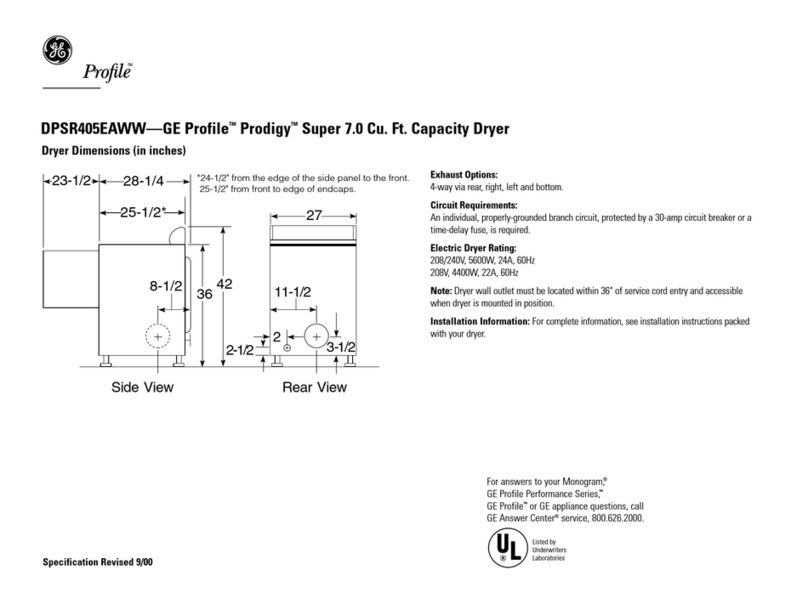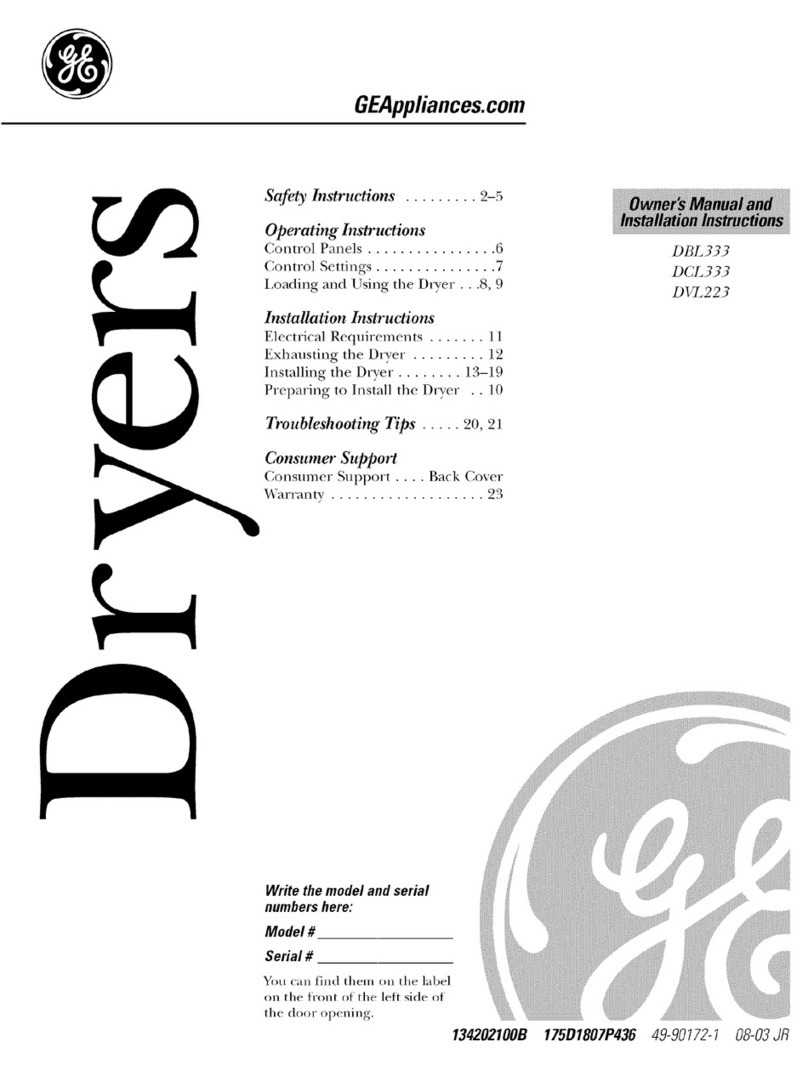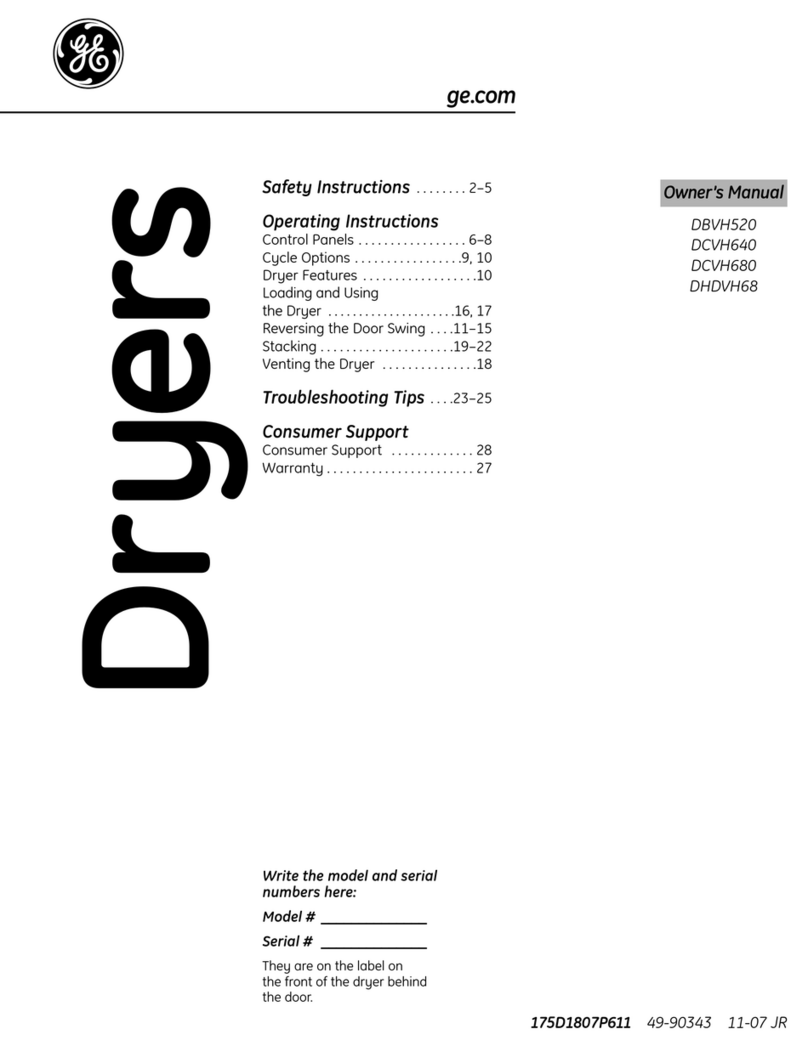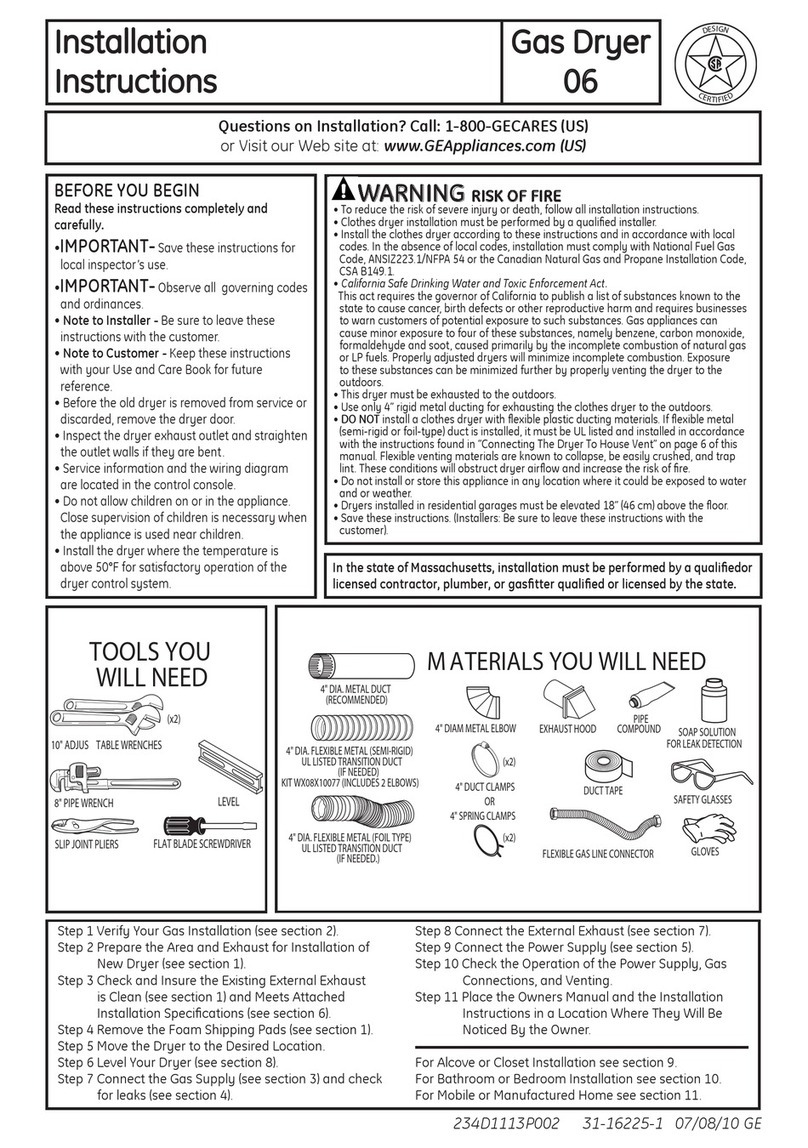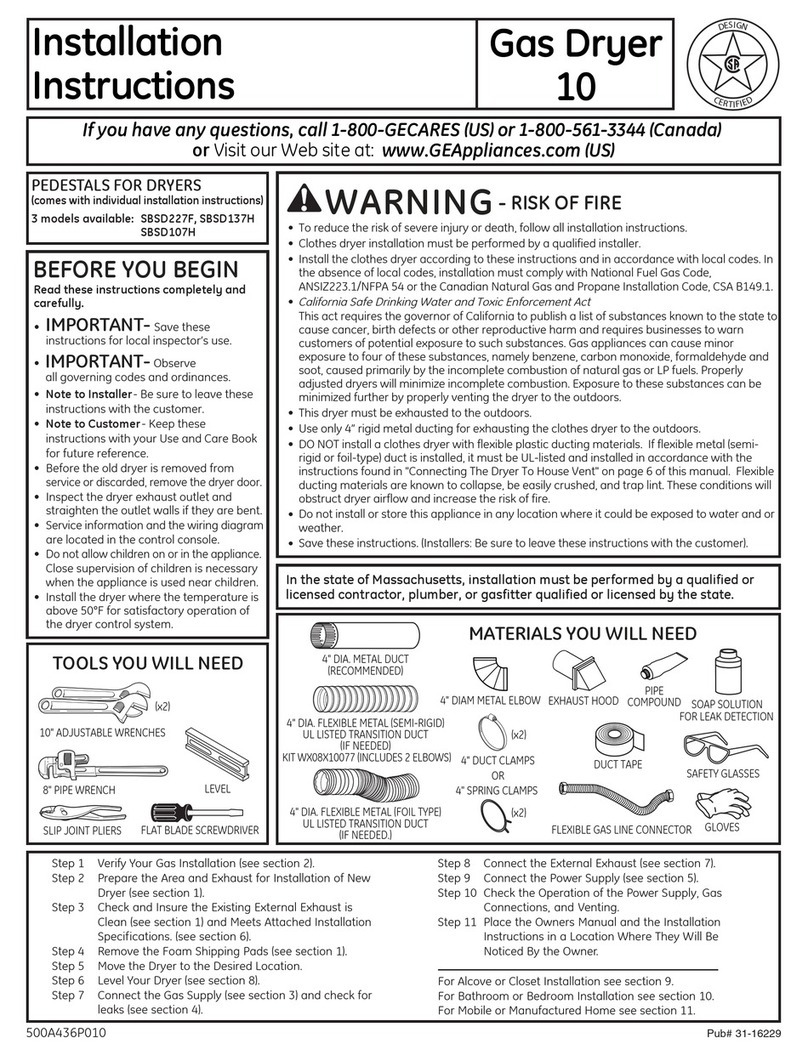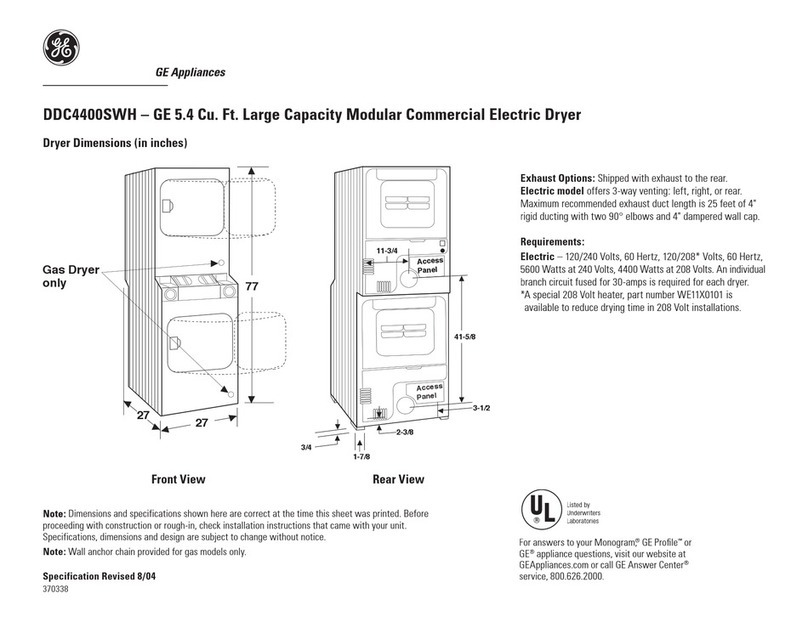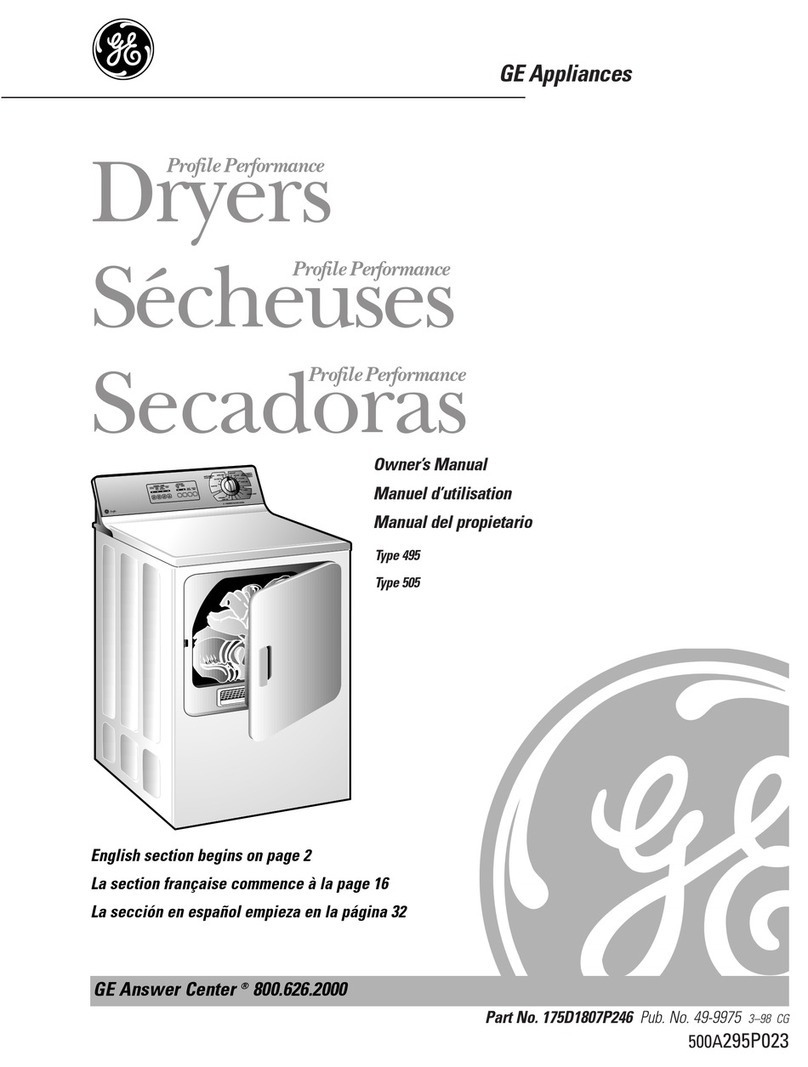CONTROL
SETT~G
GU~E
FOR
D~FERENT
FABNCS
AND LOADS
Load
Dqing
Selwtion* Cycle Cycle Setiing
Cottons and
Linens
Permanent Press, Treated Cottons,
Blends with Cotton
Normal
Automatic Regular Cycle
or Timed Cycle See Drying Selections Guide.
Normal
See Drying Selections Guide.Automatic
Perrn.
Press Cycle
Timed
CVcle
Synthetics—Polyester, Nylon,
Acrylic Knits and Woven Fabrics
Sturdy
Delicate
Automatic Perm.
Press Cycle See Drying Selections Guide
Normal
Low/Knits
Silks and Wools, Blends including
Silk and Wool
Rayon and Acetate
Low/Knits
Automatic Perm.
Press Cycle
Automatic Perm.
Press Cycle
Set toward LESS DRY. See Drying
Selections Guide.
Set toward LESS DRY. See Drying
Selections Guide.
Low/Knits
Down-tilled Garments, if machine
washing and drying are recommended. Normal
Automatic Regular Cycle
Baby Clothes—Sturdy, such as
Diapers, Nightgowns, Shirts, Pads,
Sheets, Receiving Blankets,
Coveralls
Baby Clothes—Delicate
Normal
Automatic Regular Cycle
Low/Knits
Automatic Perm.
Press Cycle
Set toward LESS DRY.
Blankets—Wool, Par-wool, Cotton,
Electric,
Syntbetic.
See below under
“Extra-large Items.”
Normal
Timed Cycle Set at 20 to 25 minutes.
Curtains, Slipcovers, Draperies.
DO NOT MACHINE DRY
RBERGLASS.
Chenille Bedspreads, Robes.
See below under Extra-large Items.
Normal
Timed Cycle For first setting, set at 20 minutes;
For second setting—set
15
minutes,
Normal
Timed Cycle For first setting, set at 20 minutes;
additional settings—5 minutes.
Rubber-coated Items, Laminated
Fabrics,
Vinyl,
Plastics and
Articles with Plastic Trim.
No Heat Timed
Cycle
Set for time desired.
Timed
Cycle
For first setting, set at 20 minutes;
additional settings—5 minutes.
Bathmats and Rugs
Normal
Extra-1arge
Items+ueen
or King
Size Sheets, Blankets or Spreads,
Sleeping Bags, Insulated Jackets or
Suits, Mattress Covers (Pads),
Quilted Bedspreads.
Pillows—Feather and Polyester-
filled (if manufacturer recommends
they be dried in a dryer). See
Special Instructions.
Low/Knits
Timed Cycle
Timed Cycle
For first setting, set at 20 minutes;
second setting—l 5 minutes;
additional settings—5 minutes.
Normal
Set at 70 minutes.
*The terms
High,
Medium and Low Heat are those
usuallv
found on fabric care labels. For best results,
follow
your fabric care labels.
NOTE: The
C~cle
Selector settings indicated above
tie
t:
be used as a guide.
You may tind that best results are obtained by setting the Cycle Selector to either side of the recommended settings.
8

